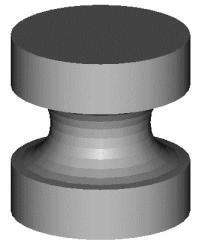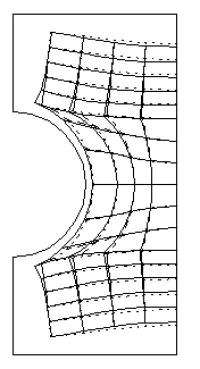Engineers crack ceramics production obstacle

(PhysOrg.com) -- Engineers at the University of Leicester have invented a new technique in the manufacture of ceramics that has the potential to save the industry time and costs while reducing wastage.
The novel method takes away the traditional 'trial and error' approach to manufacture of ceramics and instead applied new computer modelling techniques to the manufacturing process.
Researchers at the University of Leicester, led by Professor Jingzhe Pan of the Department of Engineering, focused on a critical step in the manufacture of ceramics known as 'sintering'.
Professor Pan explained: "Ceramics constitute vital domestic, industrial and building products, and are perhaps indispensable in our modern society. However, manufacturing advanced ceramics even in this era of 'precision' techniques is still very much a 'trial and error' process.

"Ceramics are produced from firstly compacting powders into a solid, and then firing the powder compacts in a process called 'sintering'. During this, powders are heated to a temperature where they adhere to each other. At this stage, materials are essentially re-packed more closely, such that overall volume decreases (shrinks), whilst the density increases. Ceramics are intrinsically brittle making post-production alterations in dimensions very difficult. Failure to accurately estimate the final dimensions of ceramic parts, therefore lead to a waste of materials, time and money. "
Professor Pan's technique helps to minimise errors during the sintering process. He said: "By predicting change in dimension during sintering is challenging, requiring extensive data on the material in question. Obtaining the required physical data has been difficult and expensive.
"Our method simply uses density measurements of different ceramics during sintering in our computer software that can predict changes in dimensions, even before production begins.
"This method does not depend on the physical properties of any one ceramic material - it simply uses densification data from a small sample of the material and extrapolates the data, such that it can be applied to larger quantities used in manufacturing. It can thus, be applied to a wide range of ceramics".
Professor Pan, who has been investigating this process for the last 10 years, added that the ceramic industry is aware of the enormous potential of computer and mathematical modelling, and of the benefits of shifting emphasis from historical data to a more predictive approach. However, several challenges need to be overcome before this method reaches daily application in industry.
For example, the system will need to be converted into a more 'user-friendly' format for industrial use. Further, the technique will have to be demonstrated in a range of industrial products.
Since inventing this technique, which for the first time, shows real potential of revolutionising the ceramic industry, Professor Pan and his group have continued to explore various properties of ceramic materials. They are currently investigating properties of multi-layered ceramics (commonly used in fuel cells) and industrial (ceramic) coating.
Source: University of Leicester

















